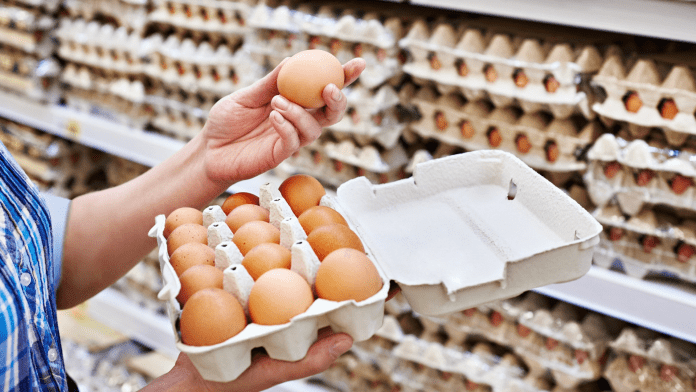According to a recent report from Rabobank, a Dutch investment bank, global egg prices are projected to stay at record-high levels until the conclusion of 2023. This can be attributed to factors such as bird flu and rising expenses related to feed.
The FAO Food Price Index, which has been in a steady decline since Russia’s invasion of Ukraine, has been a rough indicator of egg prices, which have also followed a similar trend.
According to RaboResearch, the research arm of Dutch investment bank Rabobank, egg prices have more than doubled in the first quarter of 2023 compared to the same period last year.
“Rabobank’s global egg price monitor reached a new record in Q1 2023, with the index now peaking above 250, which means prices are 2.5 times higher than the reference year of 2007, and have increased more than 100% since this time last year,” explained Nan-Dirk Mulder, senior analyst at Rabobank.
High feed costs also have a big influence on prices. “Feed represents 60% to 70% of a layer farmer’s costs, so any change or uncertainty surrounding feed costs affects egg prices and supply,” claimed Mulder.
And the forecast remains steady for the rest of the year, particularly for countries still struggling with avian influenza. “The fast spread of AI in Latin America, for example, has had a big impact, with prices spiking in the countries most affected by outbreaks,” the report stated.
Mulder cited previous egg-price peaks which were followed by “similar price drops one to two years later”. He said: “This is usually caused by producers’ response to periods of higher margins. They typically increase hen numbers to try to tap into higher prices, thus creating oversupply.”
However, this time he is not hopeful price rises will follow the same trend. “We think prices will go down in countries and regions with extreme price peaks like the US, Europe, and Japan, but likely not to the sorts of lows we have seen following other crises,” he said.
FoodDrinkEurope opted not to provide a comment regarding the report. The report highlights that the producer price index (PPI) for food and drinks is currently higher than consumer price inflation for food in the EU.
According to the report, the producer price index (PPI) for food and drinks in December increased by 20.1% over the last year, compared to a food inflation rate of 18.2%. The report also indicated that animal feed experienced a 22% increase.





